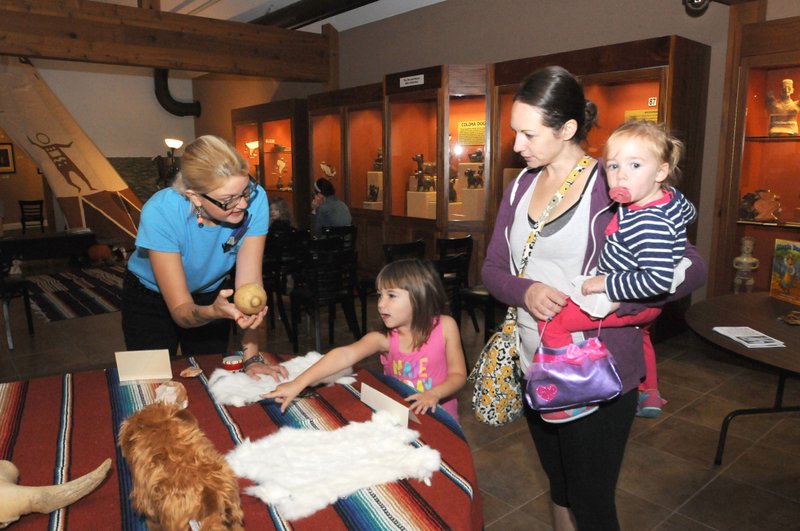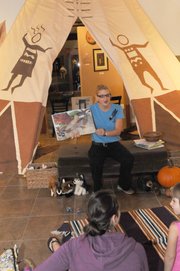BENTONVILLE -- Crystal Bridges Museum of American Art elevated Northwest Arkansas' cultural prominence when it opened in 2011, and now the Walton Family Foundation is exploring ways to build off of that momentum.
The foundation commissioned a report examining cultural needs and gaps in Northwest Arkansas and shared the findings with about 40 area art and community leaders at its downtown Bentonville headquarters Friday.
Cultural Trust
A cultural trust could play many roles if developed in Northwest Arkansas. Below are some functions they perform in other communities.
• Coordinating collaborative marketing and regional communications initiatives
• Providing professional development programs to assist emerging artists and arts managers in advancing their business management skills, careers and organizations
• Facilitating networking opportunities for the cultural community
• Maintaining artist-in-residence programs
• Administering small, flexible, rapid-response grants that allow artists, arts organizations and arts educators to take advantage of high-value opportunities that present themselves on short notice
• Raising awareness about artistic organizational excellence in the local cultural community through annual award ceremonies
Source: WolfBrown
"We wanted to know how we can broadly support the arts in the region," said Karen Minkel, Walton Family Foundation Home Region program director.
The report compared Northwest Arkansas to similar cities including Chattanooga, Tenn., and Cedar Rapids/Iowa City, Iowa, as well as cities it wants to emulate, such as Austin, Texas.
Weaknesses and gaps in the region's cultural makeup included: limited cultural options for young professionals without children, minority groups, and less-educated populations; lack of high-end art galleries; and fewer professional theater companies than are found in the comparable communities.
Most of the discussion Friday focused on the biggest identified gap: a lack of a central agency connecting the arts community, said Alan Brown, lead researcher and management consultant for WolfBrown. The San Francisco-based consultant for nonprofit institutions, funders and public agencies compiled the report for the foundation.
A central agency could provide leadership, communications, professional assistance, small-scale grants and advocacy. Brown suggested creating a cultural trust, which a WolfBrown paper said is designed to pool public and private money as endowment funds. He said those are more effective than the typical arts council model, which is frequently a government agency. Brown said arts councils often have difficulties raising money and making an impact.
The idea of creating a regional arts group is not new but has not been successful in the past. The Walton Arts Center spearheaded a failed effort in 2002 to create a regional arts council.
"There was a plan, it just didn't have enough funding or momentum," Brown said.
Minkel said Friday's meeting was to gauge interest in forming a cultural trust.
"We don't think this effort can work with just one entity. It's going to take a regional approach," she told the crowd.
The next step will be one-on-one discussions with leaders in the art community, Minkel said.
Initial reaction from the gathered leaders was favorable toward the idea. Brown encouraged everyone to think about possible challenges.
"This helps with efficiency, especially when you get everyone on board," said Rod Bigelow, Crystal Bridges' executive director. "You sometimes lose track of what each other is doing."
Peter Lane, president and chief executive officer of the Walton Arts Center, said there is a need for collaboration and community. He said a trust could be created from new funds rather than using groups' existing money and risking "turf wars."
Other challenges attendees mentioned included the region's large geographic area, small organizations' fears of being swallowed up by the large groups, and uncertainty over who would be helped and what the focus would be.
Ed Clifford said the Jones Trust is a local example of how a trust can benefit a large group. He is CEO of the trust, which supports nonprofit organizations serving families throughout the region.
He said 74 nonprofits benefit from the trust by leasing space in one of its centers for $3 to $4 a square foot and using the saved money to support their missions.
"Depending on how you target it and what it does will determine if it works," Clifford said.
Jay Dick, senior director of state and local government affairs for the national nonprofit Americans for the Arts, said there are about 5,000 variations of local art agencies nationwide.
He said there is no single outline for creating an arts organization, with each council and trust working differently. They are all nonprofits and must form a board of directors. He also recommends having a few paid employees to handle day-to-day operations.
The biggest benefit to creating an overarching organization is that it brings everyone together, he said.
"They can go out and say, 'Here's what the arts collectively believe,'" he said. "You have to band together and tell a shared story."
It also allows groups of all sizes to pool resources and help with a business plan, he said.
The Walton Family Foundation commissioned the arts and culture report as part of its 2020 plan for the Home Region. That plan anticipates an investment of more than $302 million in Northwest Arkansas and the Delta region of Arkansas and Mississippi over the next five years.
Establishing the region as a leader in arts and cultural amenities was one of four goals outlined in the report.
"We really wanted to understand where philanthropy could make the biggest impact over the next five years," Minkel said. "We wanted to understand what our strengths were and where there might be gaps, particularly given the vastly changing landscape we are in."
The foundation founded Crystal Bridges in 2005, and the museum opened to the public Nov. 11, 2011. The foundation has also been active in funding other art venues around the area, including a $5 million challenge grant awarded in March for the Walton Arts Center expansion project underway.
"I'm confident and optimistic that this group can really help take the region to the next level in the art space," Minkel said. "This is just the beginning of the conversation."
Metro on 10/24/2015


